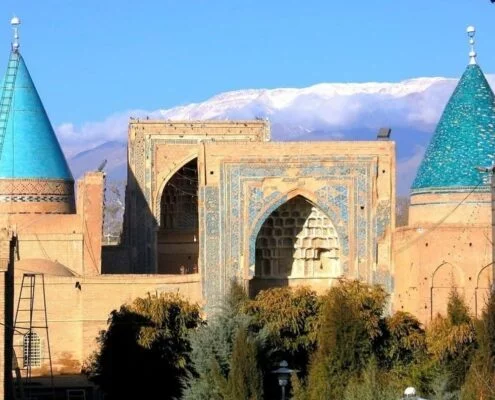About the author: The path of Persian Mysticism branches off into many separate manners and traditions; however, all the followers of this path seek the fundamental truth behind the beauty of divine love and power and devote their whole lives to the pursuit of union with God. Our friend, Junaid, is from the UK. He has a keen interest in the way of the Persian mysticism, particularly the Sufi mystics of Iran, and has read into their history. His teacher, a devotee of Sufism, introduced him to the life stories and quotes of the mystics from a young age. He believes that he has been inspired and humbled by them ever since. He has written this article for ‘Visit Our Iran’ audience after traveling to Iran and experiencing “its unfathomable beauty” in 2019. Junaid has also written an article to introduce some of the most prominent mystic figures in Iran.
*Please note that some of the historical references and claims in this article might be a matter of debate among different sects of Islam and is the author’s personal opinion.
Iran; The Cradle of Culture and History
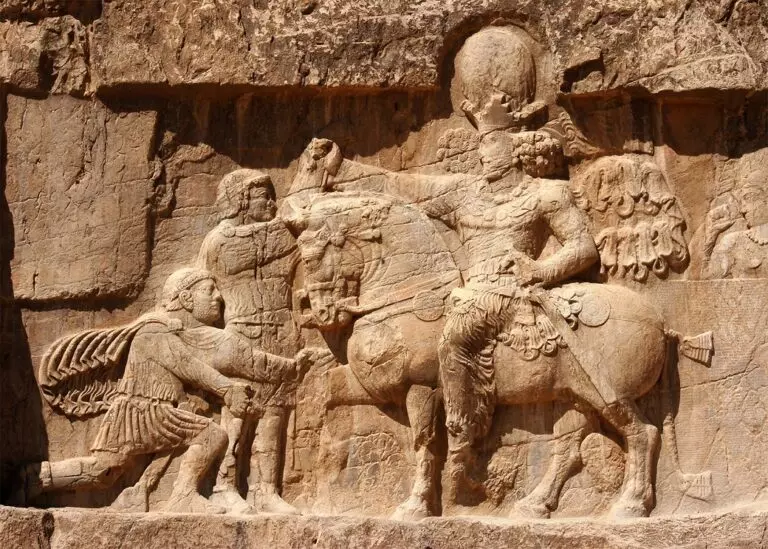
Iran is an ancient land that possesses a deeply extensive cultural heritage in Persian Mysticism. It possesses one of the richest historical lineages of any modern state, stretching back thousands of years. The history can be split between 1) the pre-Islamic ancient period, 2) the glorious age of classical Islam that many medieval cities within Iran thrived during the 9th-12th centuries AD, 3) and the modern era. Historically Iran has been thought of as the land of innovation; some of the finest innovators (e.g. empire-building, culture, architecture, medicine, astrology, etc.) have been Persian. Iran differs from the Arab nations by virtue of it having Indo-European heritage, complete with its own distinctive language, separate from its Semitic neighbors in the near east. Iran has also been considered the home of many Islamic mystics since the inception of Islam. In this article, we will explore how and why.
Sufism in the Early Days of Islam
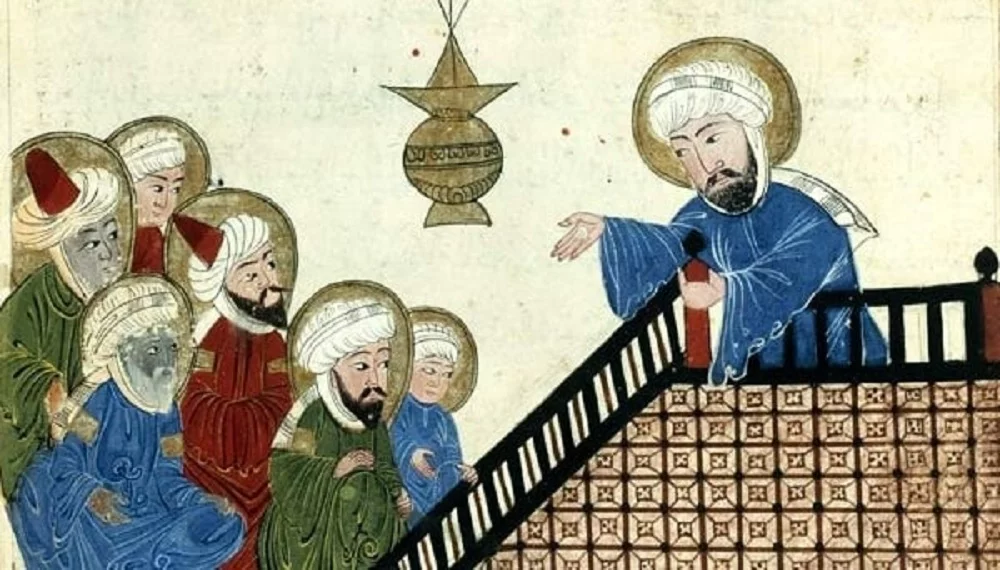
From the early days of Islam, ascetic Muslims would practice fasting, praying, and meditation in seclusion. They became known as ‘Sufis’ due to being clothed in simple coarse garments made of wool (Suf in Arabic) and their purity of heart (safa in Arabic). These Muslims, Companions of the Prophet, were individuals of principle engaging in certain disciplines and meditations for inner purification, the realization of divine love, and understanding one’s own essence and reality.
Persian Mysticism within Islam is a spiritual journey in which people seek the reality and truth of divine love through a direct personal experience of God. The Prophet’s spiritual ascension, the Mi’raj, in which a celestial steed carried him to Jerusalem, from where he ascended to the highest heaven and attained the closest proximity to God, the Qaba Qawsayn (two bows length), became an archetype of the spiritual journey. Sufism started as an imitation of the Prophet’s (PBUH) simplicity and spiritual life in a time where the Umayyad caliphs lived lavishly.
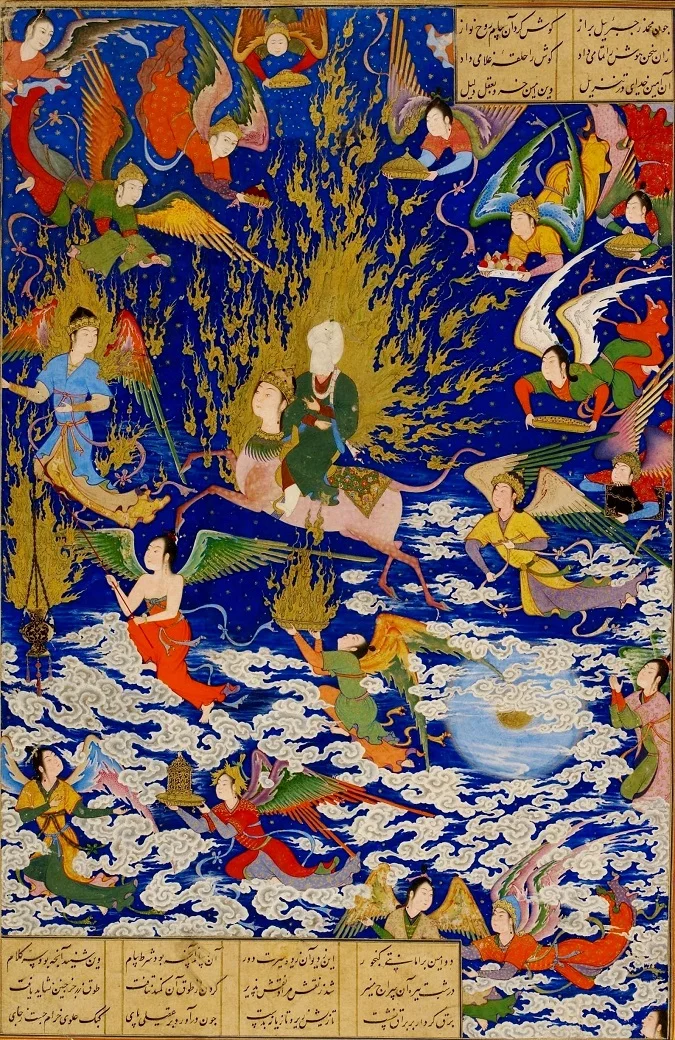
The origins of Sufism have certainly been extensively debated but that Persia was the cradle of traditional Sufism is beyond any doubt. Salman Farsi was an example of an early mystic with a Persian background; his quest for a new faith led the originally Zorastrian to convert to Christianity which took him to Syria and then to Medina, where he became an ardent and faithful follower of the Prophet PBUH.
Why not embark on a Mystic pilgrimage in Iran? Joining this experience, you can observe and follow the trace of history and take the paths taken by Persian Mystic figures, visit their mausoleums and learn about their practices deeply.
The Blessings of Persian Mysticism
Genuine knowledge of the self has been established as necessary to strengthen the relationship with the divine. The human soul contains an infinite number of mysteries that, when discovered, enable one to grow closer to Him. The famous hadith quoted by many mystics states, ‘Whoever knows himself, knows his Lord.’ In addition many trusted companions of prophet reported: The Messenger of God, peace, and blessings be upon him said: Allah said: My servant does not grow closer to me with anything more beloved to Me than the duties I have imposed upon him. My servant continues to grow closer to Me with extra good works until I love him. When I love him, I am his hearing with which he hears, his seeing with which he sees, his hand with which he strikes, and his foot with which he walks.
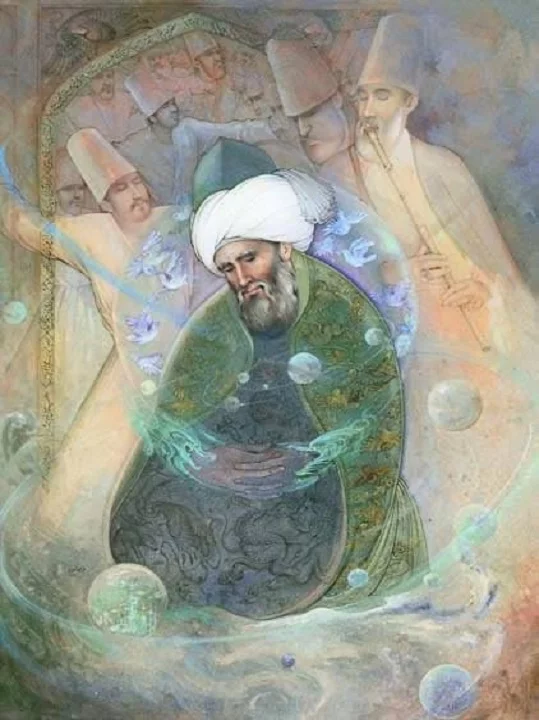
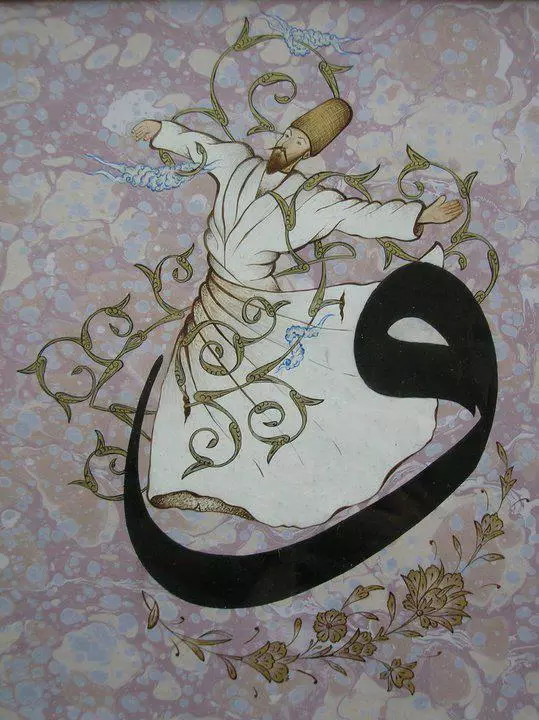
When one truly understands the reality of human nature, they understand the glorious majesty of God and what it truly means to surrender the self to Him totally. Within every individual lies the potential to become a true servant of God, to polish the mirror of their hearts and self to awaken the spirit of God within themselves. When God created humanity, he placed a portion of His spirit within us; the spirit of God. Humanity has been blessed with the unique ability to connect with the divine through voluntarily submitting to His will. As Surat Al-Sajdah 32:8 states – Then, He fashioned him and blew into him from His spirit. He made for you hearing, seeing, and hearts, yet little are you grateful.
Iranians Embracing Persian Mysticism
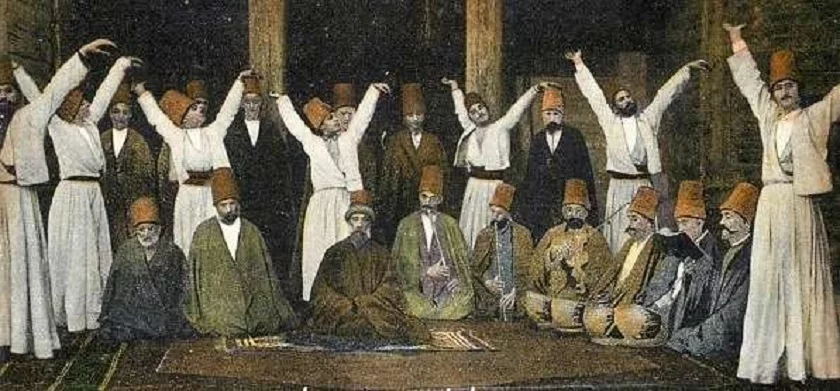
Islamic mysticism essentially provided a mechanism for individuals to connect with and realize this fundamental truth and thus fascinated those who wanted a direct connection with the divine; thence while the end of the Sassanid period prepared the Persians for a new faith, the converted Zoroastrians (of whom there were many at the time), were able to retain some of their former ‘Amesha Spentas’ by following the philosophy of the early Sufis. These included Asha Vahishta (truth and righteousness) and Spenta Armaiti (holy devotion, serenity, and loving-kindness); they believed Man could know God through his Divine Attributes; a belief akin to the belief of the Sufis that through contemplating on God’s divine essence one can become closer to ‘Him.’
The Great Influence of Mysticism on Persian Language and Literature
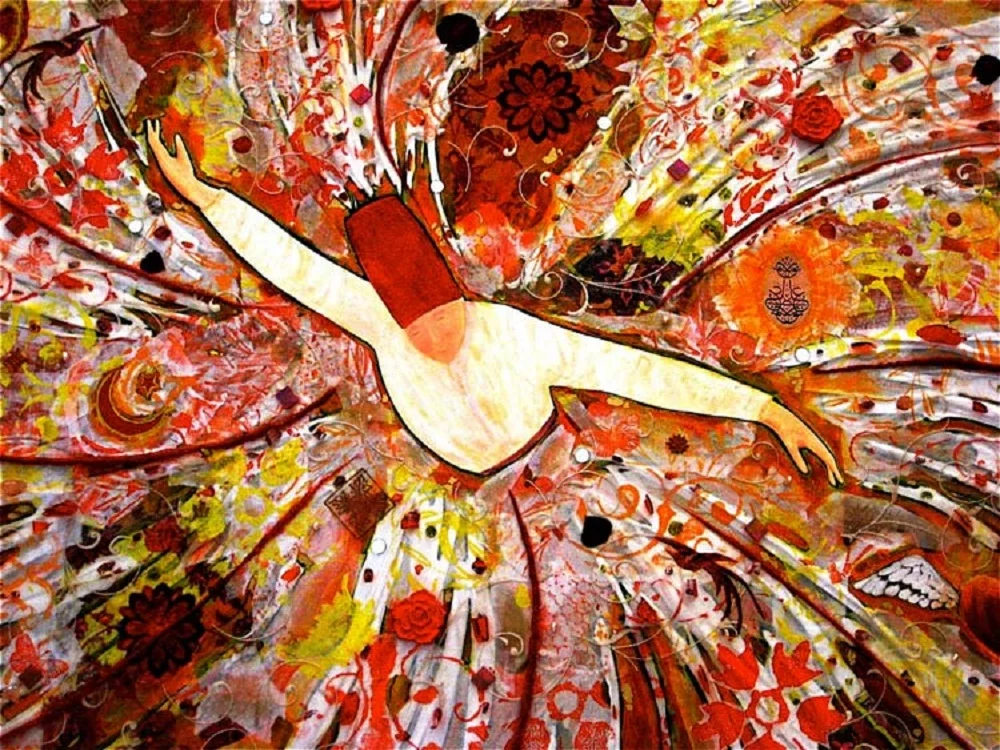
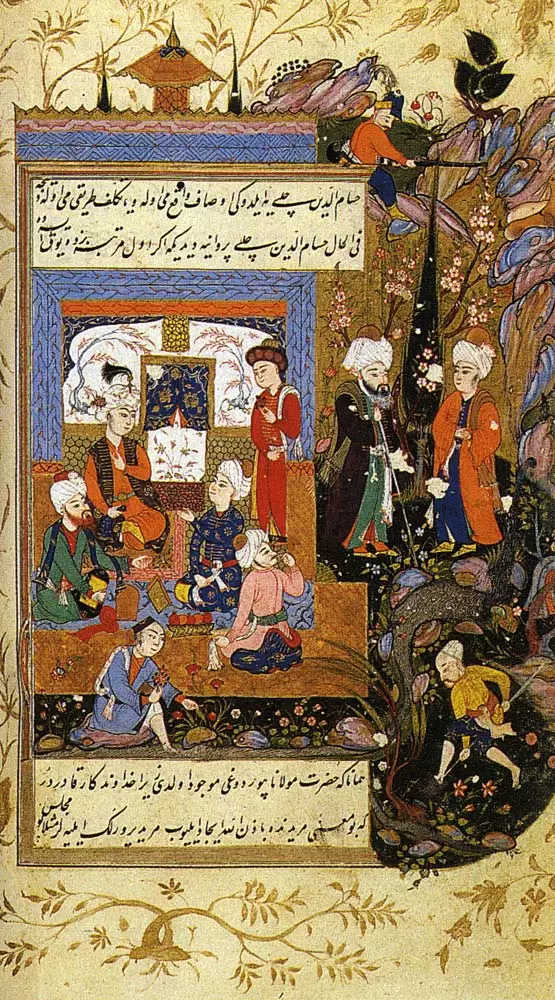
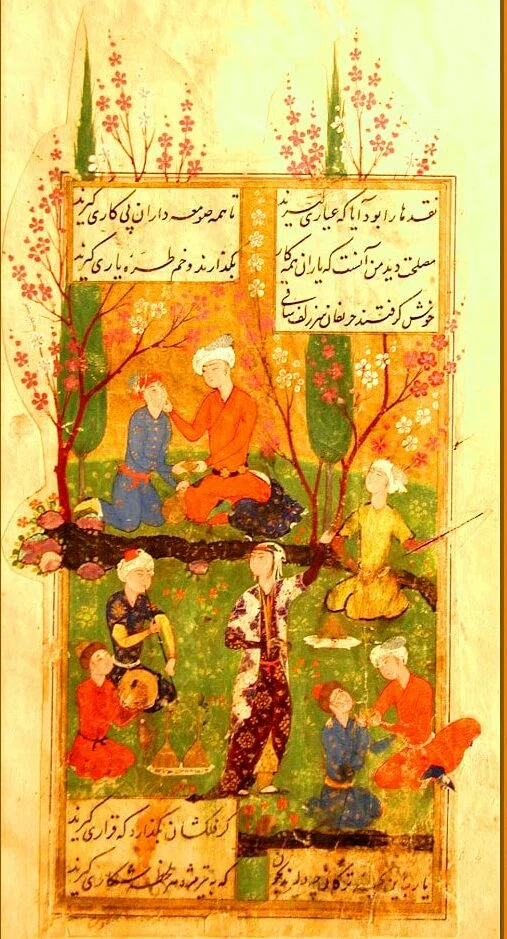
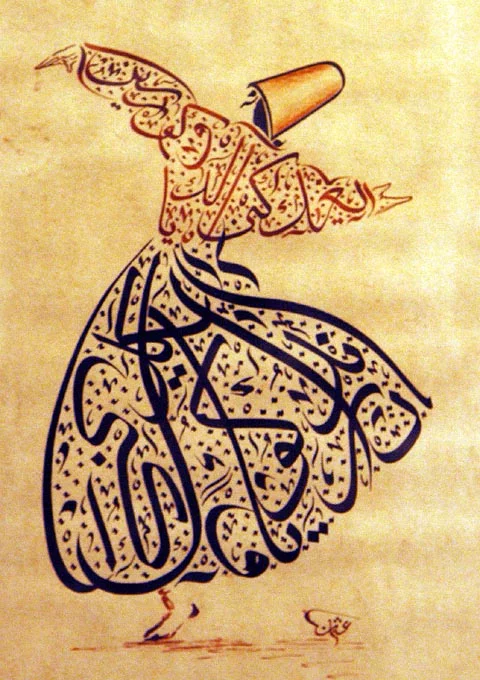
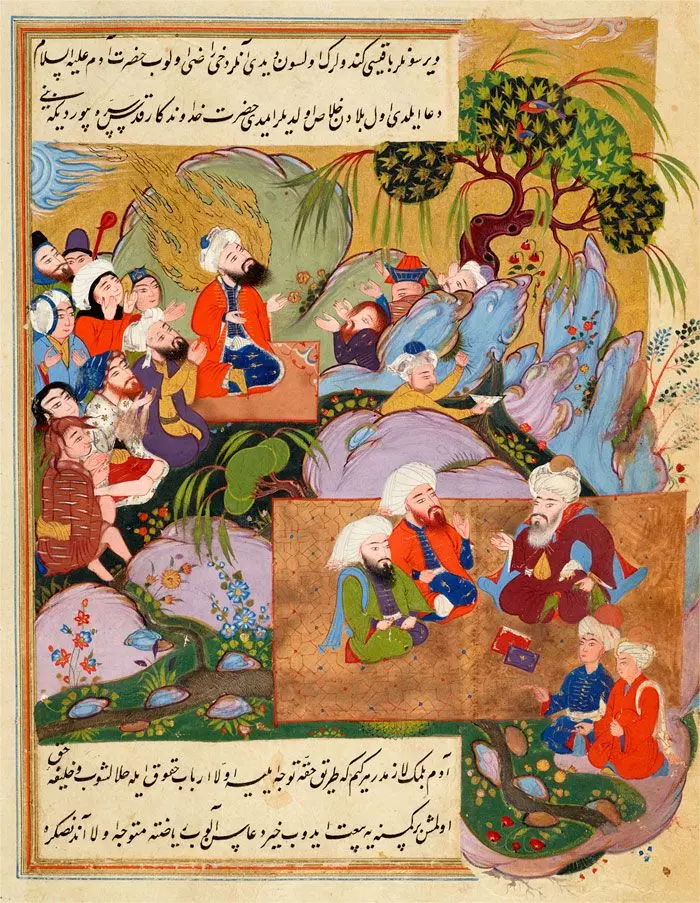
As the Persians began to adopt Islam in large numbers, particularly in Northeast Iran, Arabic developed as the primary language for literature whilst Persian remained the language used by the masses in spoken form. Once the consolidated power of the caliphate waned and marginal regions became increasingly independent, Persian speakers wrote Persian in the Arabic script to maintain their cultural identity. With time, the use of Arabic declined further. Persian became the dominant language and the source of great literature; its influence spread to neighboring lands, including India, Afghanistan, and modern-day Pakistan.
In the works of Fariduddin Attar, Hafez Shirazi, Saadi Shirazi, the lower classes were given a voice in literature. The role of the Sufi Tariqats (a Sufi order designed to guide mureeds (disciples) through an inner journey of purification) in the development of social ethics must not be overemphasized; the infamous tradition of Persian chivalry, called Javanmardi (ideals within the Islamic world linked to spiritual chivalry and morally virtuous behavior) and its ancient philosophy of athleticism have strong links with the Sufi tradition.
Different Sufi Orders and Beliefs in Iran
The Sufi belief that God should not be worshiped out of hope or fear but solely for God’s majesty and sake was what separated the mystic whose concern was heaven and the mystic whose sole concern was divine love. This received great emphasis from Rabia of Basra, a prototype of the mystic who spent her life in seclusion and worship. Legend says that her only possessions were a broken jug, a rush mat, and a brick she used for a pillow.
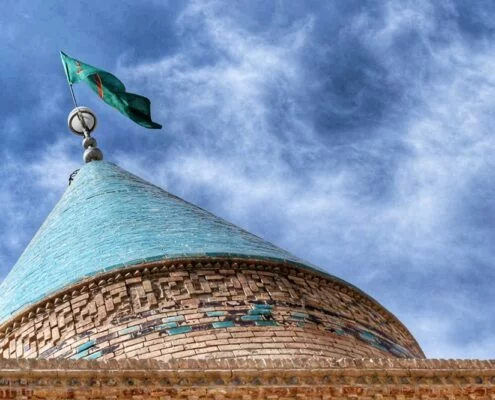
An early famous mystic of Persia was Bayazid of Bastam (d. 875), a descendent of Zoroastrians. He passed on from this world in around 874. He is known as the Sultan-ul-Arifeen (king of the gnostics) and founder of the ecstatic school of Sufism; he devoted his entire life to devotional practices and spent most of his life as a recluse. He led a life of asceticism and renounced all worldly pleasures in order to be one with God. Ultimately, this resulted in him attaining a state of ‘self-annihilation’ (fan), which is the state one is in when one dies before one dies.
He was known as the first ‘intoxicated’ Sufi because of the openness of his expressions towards God. When Bayazid left this world, he was over seventy years old. Before he passed on, someone asked him of his age, to which he replied, “I am four years old, for 70 years I was veiled, and I only got rid of my veils four years ago”. His tomb is located in the same city in which he spent most of his life, Bastam.
With the decline of the infamous Sufi school of Baghdad, following the execution of another ecstatic mystic, al-Hallaj, Khorasan became the center of the movement; this province of Persia produced some of the greatest mystics, Ibrahim Adham Balkhi, Abul Hassan al-Kharqani, Shaiq-I Balkhi, Ahmed Harb, Abu Hafs al Haddad, and many others.
Persian Mysticism between the Lines of Poetry
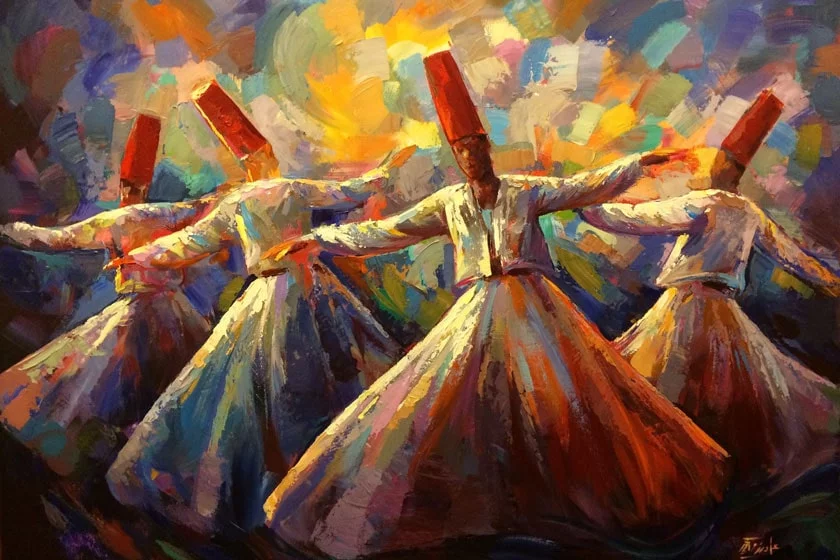
As time progressed and Persian poetry developed, the mystics emphasized the importance of all-encompassing love as the means of reaching union with God. The underlying devotion and absolute surrender of the lover to the beloved became a symbol for obedience to God. Sana’I, who was from Ghazni, wrote the first extensive text on mystical poetry, including ghazals and a mathnawi. Following the mystical mathnawi structure, Nizami wrote the romantic epic depicting the selfless love between a man and God in the form of a chaste devoted and unrealized love of a Bedouin Arabic couple. The story had been in existence for a while; however, his version became the most popular one.
Nizami’s almost contemporary Farid al-din al-‘Attar was one of the greatest Sufi poets and composed at least 45,000 couplets. The most famous of his works is the well-known Manṭeq al-ṭayr (The Conference of the Birds). This is an allegorical poem describing the quest of the birds (i.e., Sufis) for the mythical Sīmorgh, whom they wish to make their king (i.e., God). The birds that have survived the many obstacles on the path and have reached the throne finally come to realize that they and the Sīmorgh are one.
Mysticism among the Iranians Today
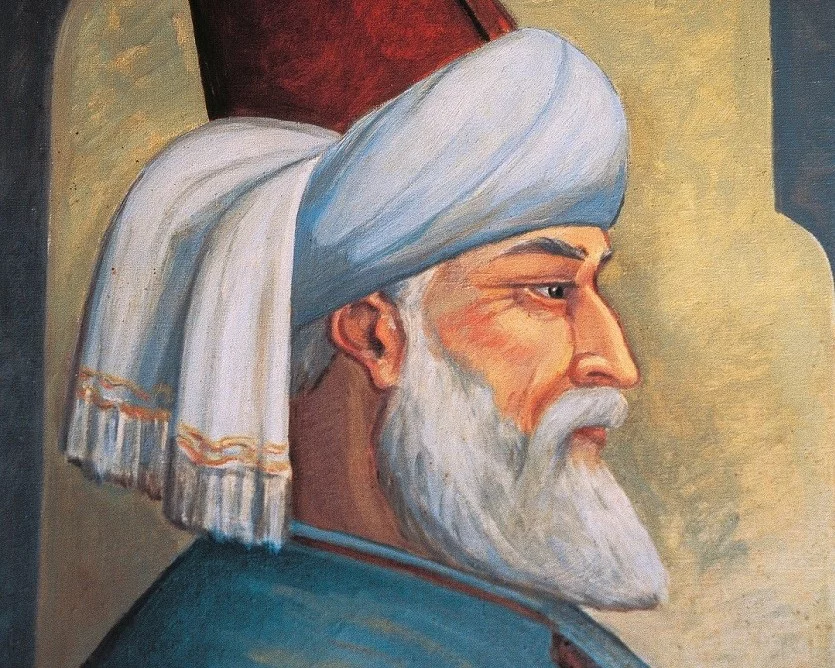
Islamic mystics can now be found in all areas of Iranian society, in the educated urban classes, in the bazaars, among craftsmen, and the villages. And it can be found in all its forms, from simple folk Sufism, in which people call on God using His “most beautiful names” and strike songs with lyrics praising God, all the way to a highly developed pantheistic philosophy. And since time immemorial, there have been tensions between the religious orthodoxy and the Sufis, who reject the dry book-learning of the legal scholars.
Though the majority of Sufis throughout history have followed the sharīah with dedication, many Sufis also offer a critique of the emphasis on the legalistic aspects of Islam alone, which Rumi argued were empty without spiritual reflection, as demonstrated by these lines from his widely influential poem, The Masnawi: He observes obedience and fasting and prayer, And devotions and almsgiving and so on, Yet never feels the least expansion of soul, He performs the devotions and acts enjoined by the law, Yet derives not an atom of relish from them.
Iran; Rich with Awe Inspiring Pilgrimage Sites
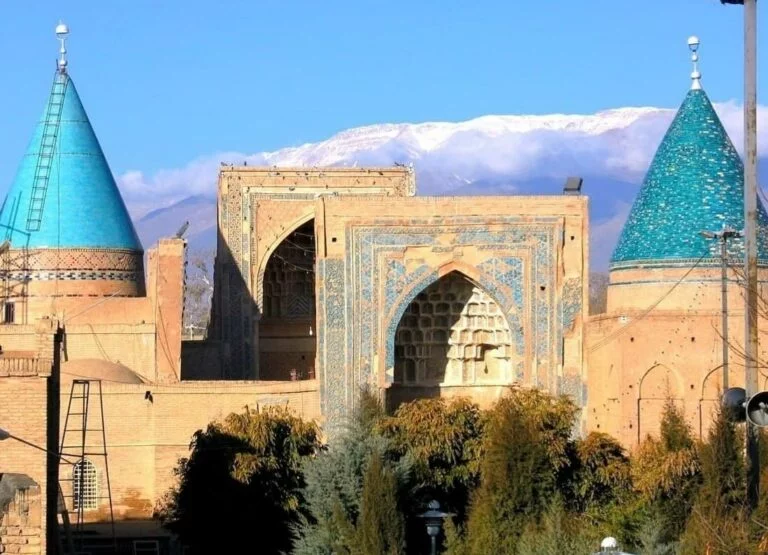
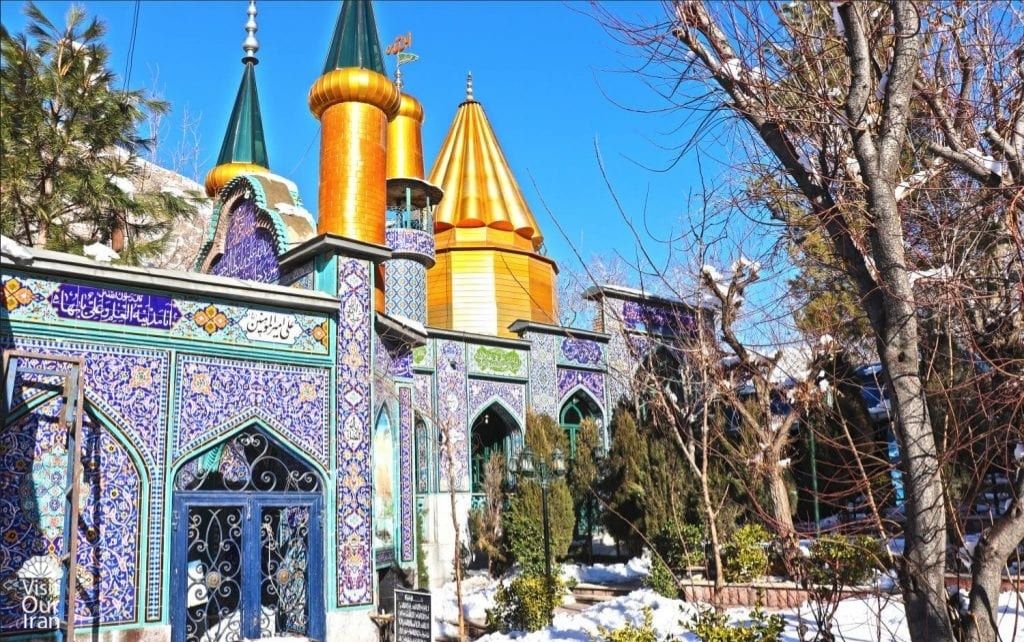
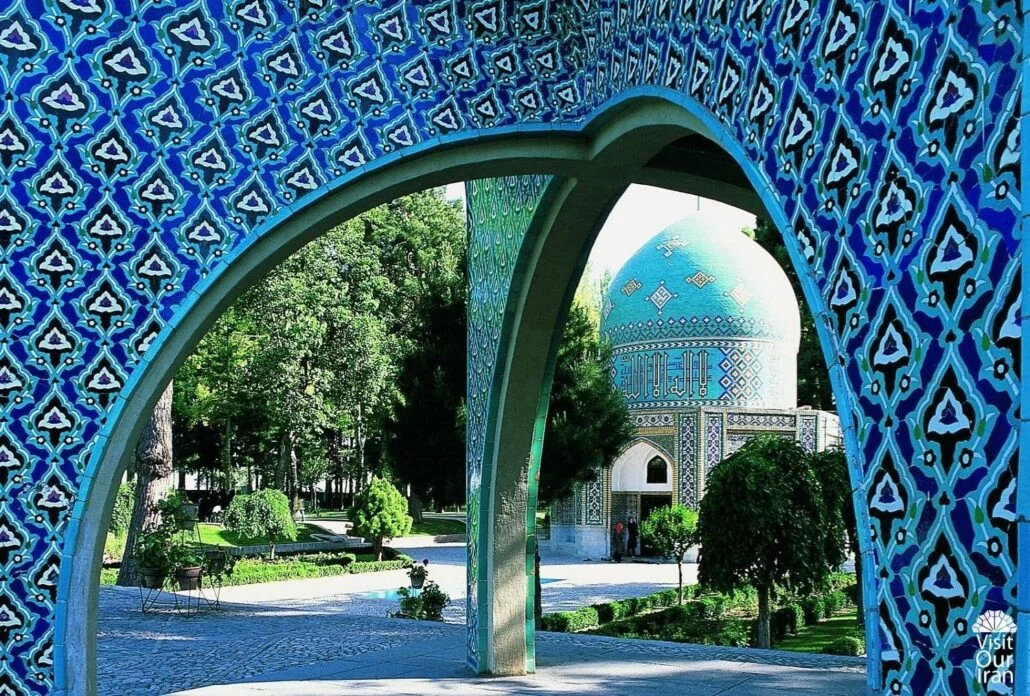
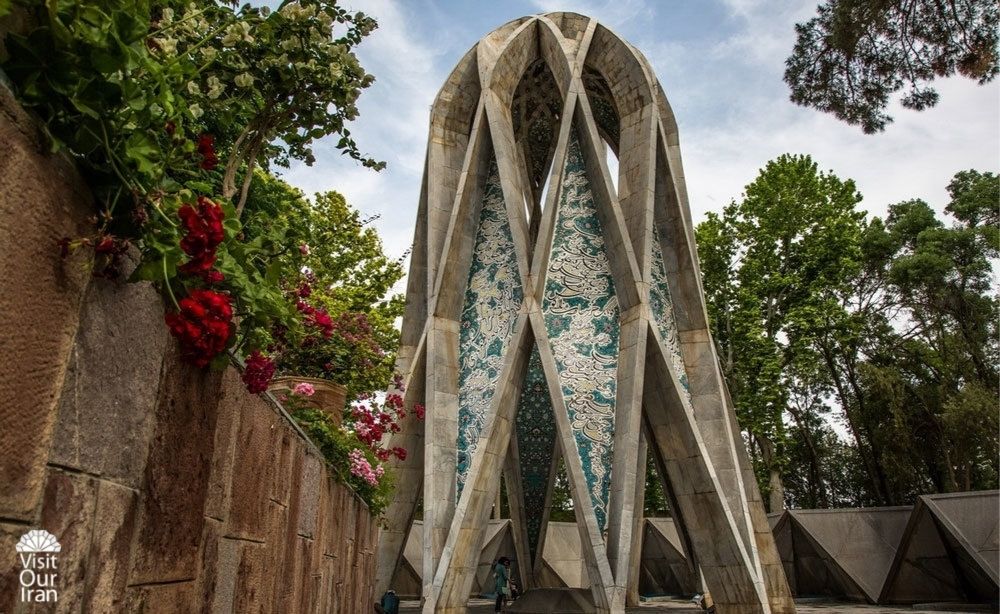
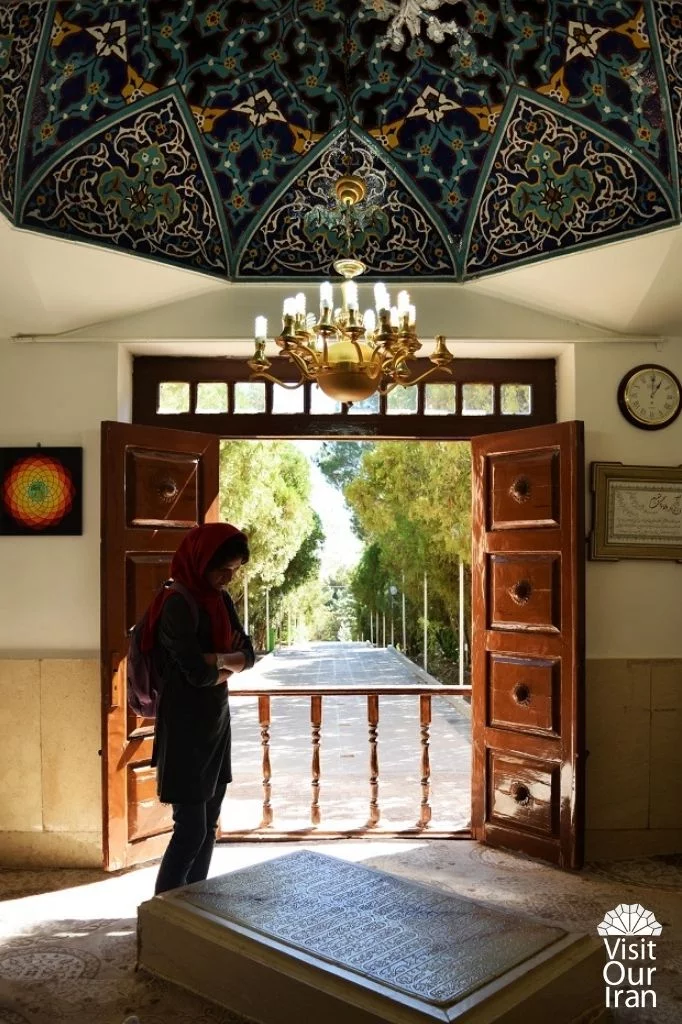
Given the rich mystical history of Iran, there are many shrines of Islamic mystics throughout Iran that have been built out of love and devotion. They have become places of prayer and meditation, congregation and servitude. The design and architecture of the shrines have Persian as well as global influences, representative spiritual, belief systems, economic, and aesthetic dimensions of Islamic social and cultural establishment. The majority of the people and visitors have strong belief systems upon the blessings of Mystics, and they visit shrines to fulfill their social, economic, physical, mental, and spiritual wishes.
